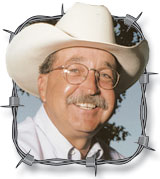Dairy farming isn’t for someone who wants to farm part time, or someone who wants to go out and check his or her cattle once, maybe twice, a day.
It takes a special person to be a dairy farmer.
Dairy farmers spend hours each day in their milk barns, no matter the weather, then there is the feeding and care of bottle babies, dry animals, heifers and/or other livestock, not to mention fieldwork. No wonder many dairy farmers’ feet hit the floor well before the crack of dawn, and it is well past dark before many call it a day. It’s hard work.
My dad can recall milking cows by hand, then pouring the milk into the cans many people use for decoration today, and hauling the cans to the road to meet the milk truck. Growing up, we used the old cans to haul water to hogs. The old route number was still painted on the sides of some. On a side note, if you have never attempted to lift a full milk can into the back of a truck, take it from me, it’s heavier than you might think.
Why do dairy farmers head to the milk barn twice a day, each and everyday? Dairy farmers would laugh if we said it was for the money. For many dairy farmers, it’s simply a way of life; a life they have chosen for themselves and their families. For others, it is a long-standing family tradition that is just a part of who they are, who their parents and/or grandparents were. You might say it’s a part of their DNA.
Let’s also not forget the growing number of dairy goat operations in the Ozarks.
The dairy goat industry allows those who might not have the land, the resources or the desire to go into dairy cattle the opportunity to offer milk or goat milk-based products, such as soap and cheese, to consumers. In high school, I actually milked goats for a neighbor for a little while. The first day I went to the nearby farm to learn my duties, I was prepared to milk the girls by hand. I was a little surprised to find there were actually milking machines for goats. Each goat knew her place in the barn and there was no wrestling them into the stanchions. It was a learning experience.
There has also been an increase in the number of sheep dairies over the last decade. According to the website mikingsheep.com, while it isn’t typical to drink sheep’s milk, it is usually higher in fat and protein than goat and cow milk, making it an excellent milk for cheesemaking. More cow and goat milk is required than sheep’s milk to make the equivalent amount of cheese. A quick Internet search showed cheese could be purchased from a Wisconsin sheep dairy for $14.45 a pound for feta cheese, up to $21.50 a pound for an award-winning truffle cheese. Pricey stuff.
As I have written in this space previously, our dairy producers face opposition from anti-animal agriculture and animal rights groups, and are branded as bad people who are cruel to their cows and calves, all for a paycheck. Those groups have obviously not seen the cost of inputs. Many farmers are lucky to break even.
Raw milk, goat milk and sheep milk producers are not immune to scrutiny.
PETA has taken a hard stance on all dairy production in recent years, crying the same foul it has about cow dairies for the last decade.
Organizations like PETA are too jaded from incorrect information, most of which was conjured up by their own people, to see what actually happens on our family farms, the passion we have for our industry and our concern for the welfare of our animals.
As we celebrate National Dairy month, make it a priority to salute our country’s dairy farmers with an ice cold glass of moo juice, a slice of sheep milk cheese or a cup of goat milk yogurt in support of all dairy producers in the Ozarks.
After all, they are special people.
****
Sadly, the OFN family is mourning the sudden loss of longtime freelancer Gary Digiuseppe of Maumelle, Ark. Gary was a great asset to Ozarks Farm & Neighbor and to the agriculture community. Gary was killed in a car crash on June 1 in Arkansas. He will be greatly missed.
Our thoughts and prayers go to his wife, Mary, and the rest of the Digiuseppe family.
Julie







